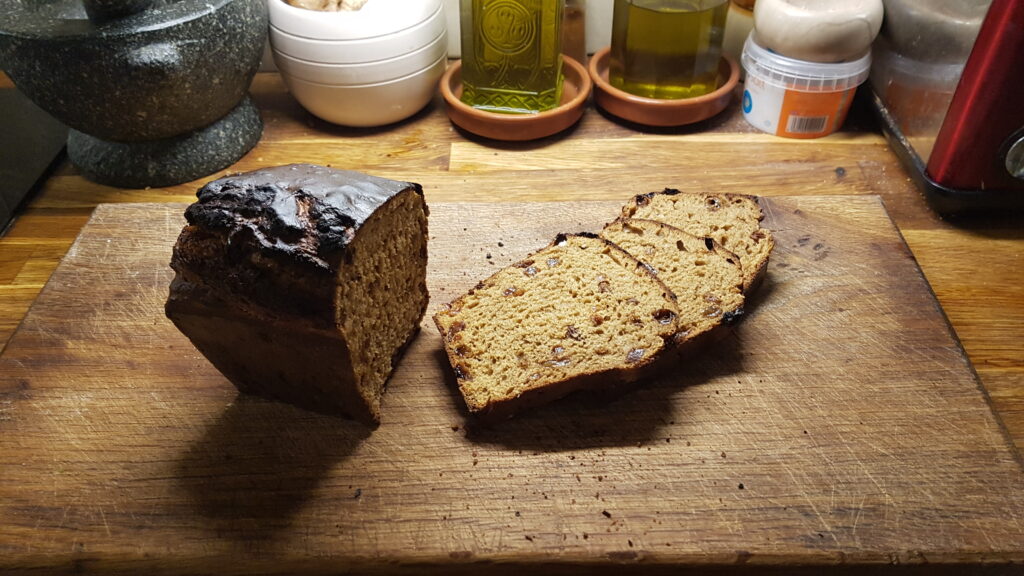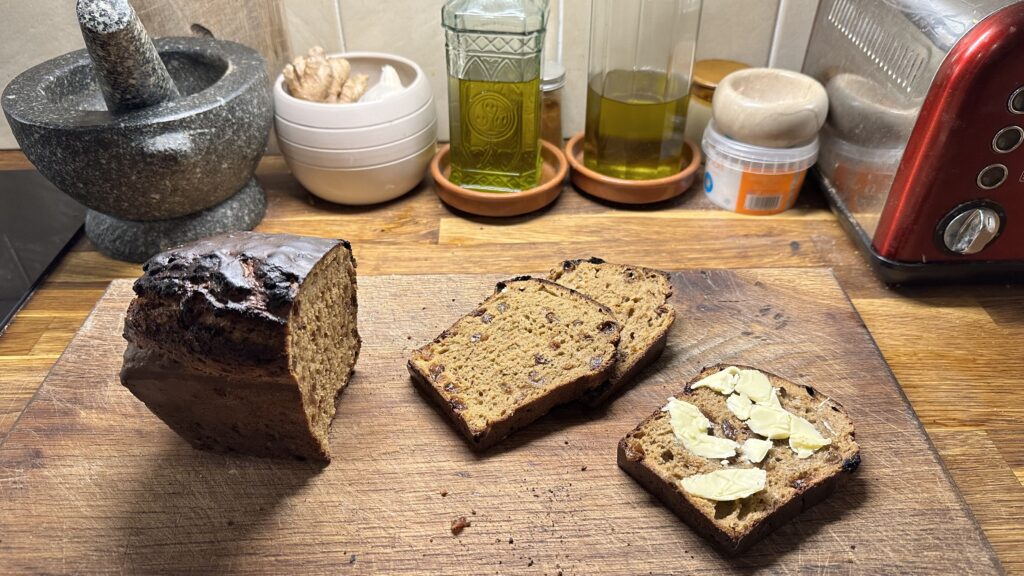
The origins of malt loaf, that dark and sticky, fruity bread that still comes wrapped in waxed paper, date back to 1932, when it was invented by a Danish baker in England. The barley malt that gives it such a memorable flavour contains vitamins A,C &D, plus iron, magnesium and potassium, and the loaf gained popularity as a health booster for the urban working classes in the 20th century. Today, it’s a reliable filler of lunchboxes and a favourite for fireside tea.
Last year, malt loaf featured on the Bake Off, so I checked the winning recipe. To my surprise, it contains only baking powder and bicarbonate of soda as raising agents. Those of you who know us, will remember how enthusiastic we are about fermentation and its benefits for gut health, so you will not be surprised to hear that my own malt loaf recipe is based on 100% sourdough rye.
Unlike the Soreen original, my crust is a proper crust, which I brushed with olive oil after baking, just for the sheen. The inside of the loaf is truly soft, moist and luscious. Since Dragan now avoids dairy, he slathered his slice with vegan cream cheese and organic honey, which was so delicious that I did the same. I recommend you try it too.
THE VEGAN, SOURDOUGH, SUPER-HEALTHY MALT LOAF TO GET YOU THROUGH THE WINTER!
RECIPE for two 600g loaves
- 400g rye sourdough leaven*
- 400g Shipton Mill Organic Light Rye flour
- 12g sea salt or rock salt
- 180g organic sultanas (or raisins/mixed fruit/chopped prunes )
- 90g organic barley malt
- 60g organic molasses
- 260g hand-hot water
*80g rye starter + 128g rye flour + 192g water, mixed 8 to 12 hours in advance

- Stir salt and fruit into flour
- Add leaven
- Dissolve barley malt and molasses in the hand-hot water
- Add liquid to bowl
- Mix with spatula or one hand until no dry flour is visible; the dough is sticky, golden brown and almost runny
- Cover and leave in a warm place for two hours
- Pour the dough into two 500g loaf tins, preferably those with very high sides
- Allow to prove for about one hour, or till dough rises nearer top of tins
- Bake at 250 C for 10 minutes, reducing to 210 for a further 15-20 minutes
- Move loaves down to middle of oven if getting too dark – but darkness is part of the magic!


